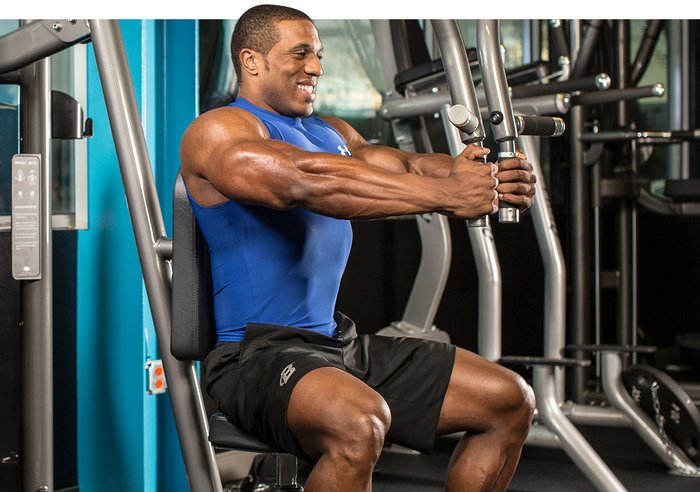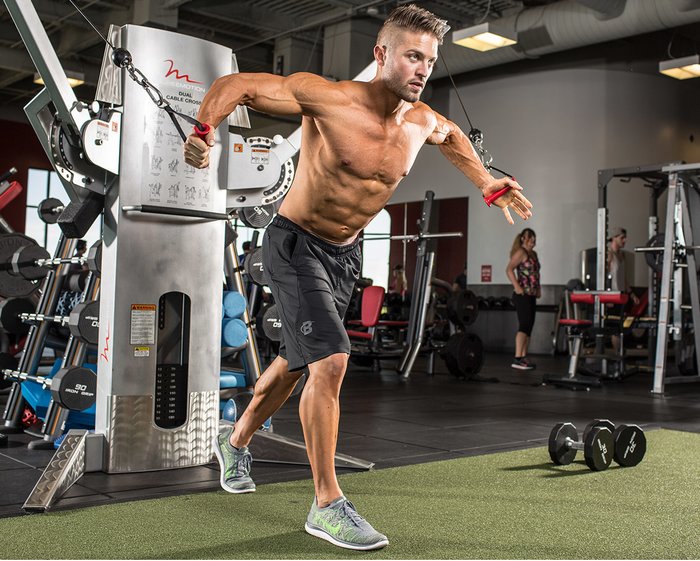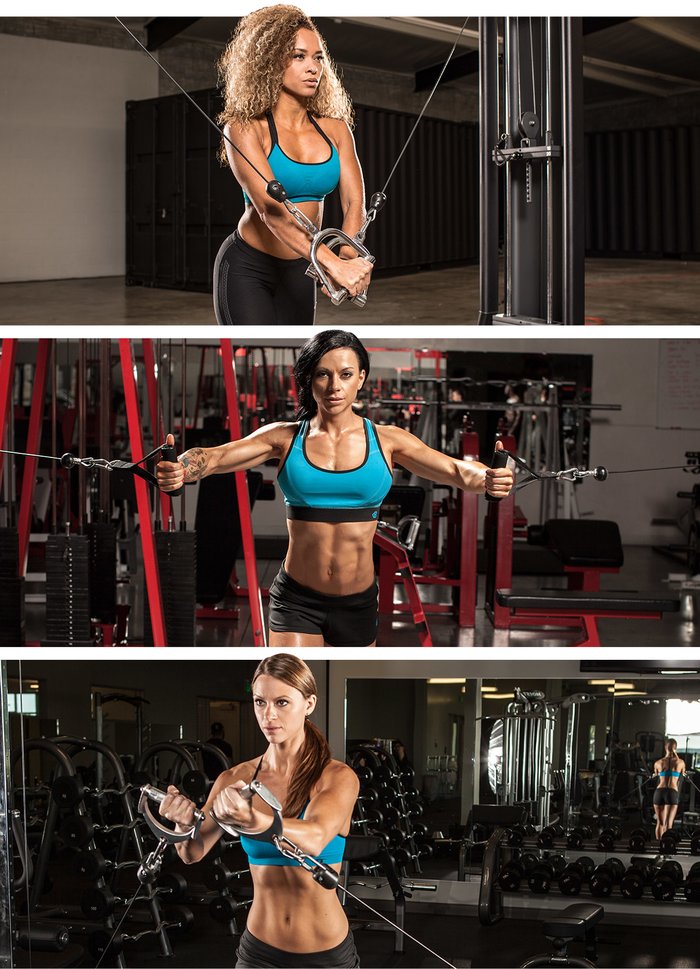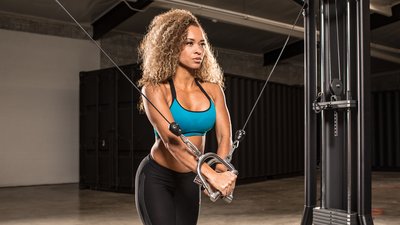Bad training habits are tough to break, especially if you're not aware of them. Sure, they might not always lead to you getting injured, but they can definitely make a movement less effective. In particular, I see the same errors all the time on the cable cross-over, a single-joint movement for chest.
Be honest: Are you guilty of any of these five frequent cross-over blunders? If so, no need to worry—I've also provided remedies for each one, so you can be aware of what you need to work on next time you add this cable movement your chest workout!
1. Opening/Closing Your Arms
All single-joint movements for chest have one thing in common: The elbows are locked in a slightly bent position for the duration of the movement. Namely, the degree of bend in the elbows doesn't open and close during the rep—it should remain about the same throughout, leading to a big arc-like motion, as if you're hugging a barrel or a tree.
However, many trainees close up their elbows in the stretched position, similar to what you'd see in the bottom of a pressing motion, and extend their arms on the contraction. This is called "pressing your flyes," and it's especially common when using a weight that's too heavy. The problem is that it essentially turns this single-joint movement into a multijoint one, meaning the triceps and shoulders are now doing some of the work the chest should do.

Solution: Go lighter, and rehearse the motion on the pec-deck machine with your arms locked in the slightly bent position you'll use here.
2. Keeping Your Feet Together
Doing cross-overs feels extra hard when you have your feet together, because you're not well-equipped to absorb the changes in your center of gravity. This added level of difficulty leads some people to believe it's making the movement better. It's not.
Cross-overs are detail work, not full-body work. Anything you do to make the movement more of a struggle, particularly when it comes to balance, is going to detract from your ability to groove out quality reps and feel them where you should.

Solution: Stagger your stance with your feet fairly wide and your knees unlocked so you can feel stable and focus on what's happening in your chest.
3. Failing To Use Multiple Angles
One of the greatest aspects of the cable cross-over is that you're not fixed to a single pulley position. By moving the pulleys to any number of stops from high to low, you change the angle of pull on the chest fibers. This allows you to manipulate the target points you want to hit on your chest. Up above will favor lower chest, while crosses from below will favor upper chest. Reps from the middle will hammer on the inner chest.

Solution: Mix it up! One way is to rotate between various high points, low points, and stops in between. Alternately, when you really want to feel a pump, blow out your chest with sets from up and down the stack.

